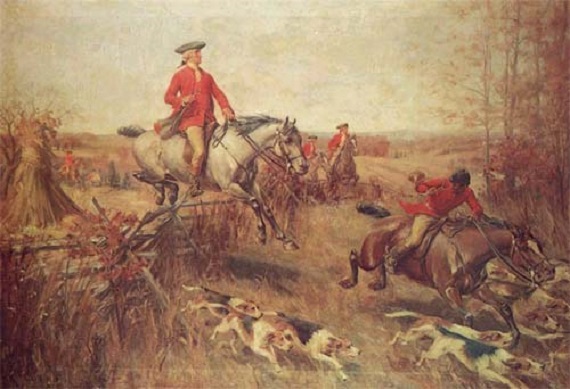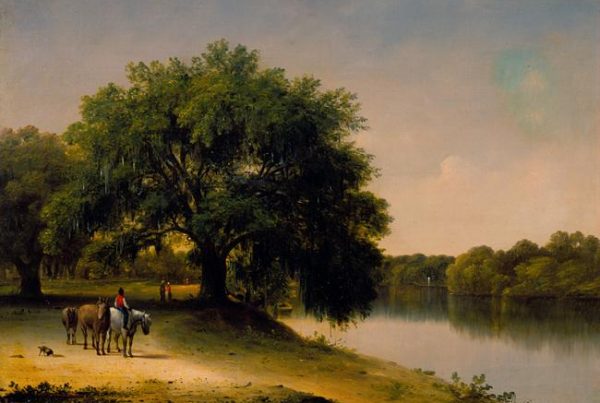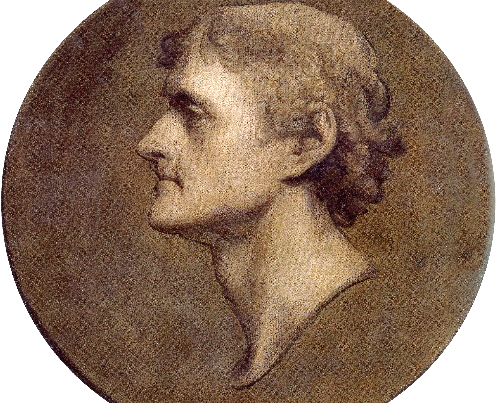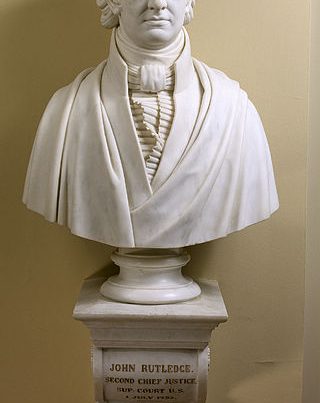Ah! My Lord Arthur, whither shall I go?
Where shall I hide my forehead and my eyes?
For now I see the true old times are dead…
Tennyson, from Idylls of the King
My grandfather loved Tennessee Walking Horses, a breed so named for their beautiful run-walk, a gait which they carry in place of the trot found in other breeds. It is like a magic carpet ride, and it is a gift from Heaven. Grandaddy would go to Shelbyville, Tennessee to see about them when he could find time to get away from his medical practice in the little town of Cameron, in Calhoun County, South Carolina. Grandaddy had a dapple gray in the paddock out back named Traveler, after General Lee’s famous charger. We’d bring him apples, but you had to hold it in your palm with your hand wide open flat so he wouldn’t nip your fingers. We were barefooted most of the time, and if we didn’t watch out when we climbed up on the fence, he would try to nip our toes.
Grandaddy gave my mother and father a Walking Horse (with papers) named Allen Slave for their wedding present, and Dad would take me riding with him when I was just a little tyke. He would perch me in the saddle in front of him with his arm tight around my waist, for Allen was pretty frisky.
Later, my father got another Tennessee Walker named Sox. He was a big chestnut gelding (with maybe a bit of roan) and had four white stockinged feet and a white blaze all across one side of his face – lots of “chrome” as they say these days. My father had originally gotten him to serve as his charger in the jousting tournaments – a sport that had been carried on in the South since antebellum days – and he rode in them until the pageantry faded from the tournaments in Virginia.
These tournaments originated with the old sport of Squires, who would gallop at rings and try to spear them with a lance. But the roots were far older than that. Lieutenant-General Sir John Bagot Glubb, a veteran of the British Army and the Commander of the Arab Legion during the Arab-Israeli War, tells that cavalry fighting with the lance dates back to the Bedouin camel herders of the Arabian desert before the time of the Prophet (Peace be upon Him). As the Arab Conquest burst out of the Arabian Peninsula, the Bedouin cavalry exchanged their camels for horses to carry them (along with their code of chivalry, their fierce code of honor, and their contempt for settled communities) eastward to the Oxus and westward across North Africa and into Spain. The Bedouin’s code of chivalry and his mode of warfare was emulated and retained by the Spaniards and spread across the Pyrenees into France and England. Chivalry came full circle during the Crusades, when Richard the Lion-Heart rode out before his army with his lance to challenge a champion from the army of Saladin.
General Glubb relates that while this form of warfare eventually disappeared from Europe with the advent of gunpowder, it lasted with the Bedouin until just before the First World War – the last occasion being at the battle at Jumaima in 1910, when two champions rode out and met in personal combat in front of their respective tribes. After the First World War an immense number of rifles from the old Ottoman Empire fell into the hands of the tribes, ending the ancient custom of personal combat between champions and transforming this dangerous sport of limited warfare – waged for personal honor and glory – into total war.
We are now horrified and disgusted at acts of terrorism (“the poor man’s atomic bomb”) coming from those parts of the world, but those old warriors would have been just as horrified and disgusted at our mile-long sniper shots and the bombing of mountain villages by remotely controlled predator drones. As Edmund Burke had written of the French Revolution, the Age of Chivalry is dead. That of sophisters, economists and calculators has succeeded.
In 1859, J. Alexander Patten, a contributor to the weekly New York Mercury, came down to Southside Virginia and sent back a series of sketches for publication. One of his sketches was of a tournament in Bedford County. I do not remember seeing such pageantry as he described, but it was not much different from that which my father described of the tournaments he rode in as a young man growing up in South Carolina. They were held at the high school, and each “Knight” had a Lady for whom he rode. Each of these Ladies, dressed in their finery, was seated in the stand near the announcer, and at the end of each of his rides at progressively smaller rings her Knight would present to her on his lance the rings he had caught. The Lady whose Knight won the tournament (by catching the most rings) was crowned Queen.
That much pageantry in the Virginia tournaments that I saw had faded, but I do remember the big tournament parade in Farmville, with all the Knights in their colors mounted upon their fiery chargers parading up Main Street. At the tournaments, the cars with their horse trailers would be pulled up in a row facing the track. In the middle there would be an announcer in an elevated stand with a PA system. The track ran down along three poles, each with a cross-bar higher than the rider’s head. The crossbars reached out over the track and were each fixed with a clip to hold a ring. The first round consisted of rings maybe two or three inches in diameter, and each Knight would have a go at them with his lance. The announcer would call each knight in the lists, and as his turn came the announcer would say “Charge, Sir Knight!” The Knight would charge down the track at a gallop and make his run at the rings. Those who did not catch all three rings in that series were eliminated from further competition, but those who did would make successive runs at successively smaller rings – all the way down to maybe a half an inch in diameter – until the champion of the tournament was determined.
There was one noted difference between the tournaments held in South Carolina and the ones held in Virginia. In South Carolina, the requirement was for the lance to extend at least seven feet in front of the grip and the lance must be held under the arm. In Virginia the lance need extend only three feet in front of the grip, and it might be held either under the arm or over the shoulder like a javelin. I used to think that the Virginia way skimped on tradition for the sake of utility, but on the Bayeux Tapestry (late Eleventh Century) it shows examples of Norman knights attacking at the Battle of Hastings carrying the lance each way. The caption under the picture in Marc Bloch’s Feudal Society notes that some Knights are using the lance as a javelin while others are carrying it in “the new manner.” My father held his under his arm in “the new manner” – Carolina style – as did most (but not all) Knights on the Virginia tracks. He did not hold the lance clamped to his side, however, but – standing in the stirrups at a gallop – he aimed it at the rings while sighting along it with his elbow held up.
My father’s Carolina lance was not ornate. It was a plain shaft with a tip fashioned from a 30-06 cartridge. But I remember going down town with him in Lynchburg to have his new lance made for the Virginia tracks. He had a long stainless steel rod about two feet long ground into a point on one end. This was then welded to the inverted base of a stainless steel cup that had been milled on a lathe to allow the tip to be fitted and attached onto the end of the shaft. The lance was a wooden, straight-grained shaft that had also been turned down on a lathe with a taper and a little decorative swell at the other end, and shaped in such a way that it was perfectly balanced at the grip point. It also had some heft to help stabilize it with inertia and keep it steady when at a gallop. At the three foot point my father ran a piece of copper tubing through a drilled hole and turned it back a little to keep his grip in the proper place – which gave a homely touch to a traditional warrior’s carefully crafted, ornate, and personalized weapon. When held at this point the lance was perfectly balanced, and I remember it being kept propped up behind the kitchen door long after my father had given up the tournaments and turned Sox out to pasture.
I rode Sox quite a bit – sometimes with a McClellan saddle, sometimes bareback, and sometimes with a Western saddle. My father (who had spent all of his life on a flat saddle) said you couldn’t fall out of one of those Western things if you tried – “and for God’s sake, don’t grab hold of the saddle horn!”
In the front pasture there was a line of three telephone poles. If you were riding Sox and weren’t paying attention and rode to the fence up by the road and then turned back, the old war horse would see that line of poles and break into a gallop down along them, thinking he was back on the tournament track.
Taking Sox back to the stables, I would unsaddle him and wipe him down. One day, while giving him a drink of water at the trough and putting a block of hay in his stall and some sweet feed in his box, I wondered where his blood had been. Had it pulsed in the veins of a horse in Stuart’s cavalry? Or had it been in Tennessee with Forrest? Had it been in Carolina with “Lighthorse Harry” Lee or “The Swamp Fox”? Was it there at Camlann when Arthur fell? Had it known the chafe of a chariot shaft or a pull on the reins from Hector, breaker of horses, before the walls of windy Troy? Did it race with the horsemen across the Eurasian Steppes when the worlds collided and the seas parted and the oceans churned as Lord Shiva danced the Tandava across the thunder-cracked skies at the Fall into Time? Sox only gave me a nuzzling shove, rubbed the side of his head up and down against my shoulder, and went back to munching his sweet feed.
The last thing I saw of the tournaments in Virginia was a picture in the newspaper of some “Knight” – with a plug of tobacco in his jaw – wearing a flannel shirt and a feed store hat. My Father had long since gone fox hunting with my sister. He later became Master of the Bedford County Hunt, but I remember him best thundering down the tournament tracks – glory at a gallop! His sash was of red and gold, and it is now carefully folded in the drawer of my bedside table. He was “The Knight of Melrose” – Champion of his mother’s plantation in Buckingham County – and I was his Squire. Like the Knights of old, he taught me to ride, to shoot straight and to speak the truth.
“Always mount from the left. That’s the way horses expect you to do. It comes from centuries of cavalrymen having to mount from that side with their sabers on their left hip.”
“Reach over with your left hand – palm down – and take the set of reins in your fist. Let the right rein come out between your middle finger and your ring finger, and the left rein come out from the bottom of your fist. That way you can neck-rein him and leave your right arm hanging straight down by your side, or free for wielding a saber or a pistol.”
“Sit up straight! Don’t flop around like a feed- sack!” And “Don’t flap your elbows up and down like some buzzard or those people in the cowboy movies!”
My father ran the Small Arms Committee at the Infantry School at Fort Benning, Georgia, before he was sent to India and Burma. “When you shoot for accuracy, take a breath and let it out. That calms your heartbeat. Take another breath, let half of it out, and catch it in your throat. Then press the trigger! If your front sight wavers off the target, hold the pressure you have on the trigger until you bring it back, and then press some more. It is supposed to surprise you when it goes off. If you jerk the trigger you are going to miss every time!”
After the war there were a great many war movies that were produced by Hollywood. When we lived on Landon Street, we boys on the street loved to go see them. One would go and the rest would check him out: “Was it in color or black-and-white?” “Did it have a lot of war stuff, or was it a bunch of all that lovey-dovey stuff?” We always thought that Hollywood ruined perfectly good war movies when they filled them up with all that lovey-dovey stuff, but my father said that the hugging and kissing were his favorite parts. I once asked him if he had ever shot anybody in the war.
“Well,” he said thoughtfully, looking into the distance, “there were two times I might have. It was at night, and you can’t see anything in the jungle at night. The Japs attacked us and everybody was shooting. I shot at two men and they each went down – but everybody was shooting at the same time, so I don’t know if it was me or not.”
But my father was a crack shot and I knew what had happened.
“Man, Daddy, I wish you’d’a shot a hunnerd of ‘em!” I said excitedly.
“Oh, no, Bud,” he said quietly, looking at me with earnest conviction. “Don’t say that, Son. That’s not right. Those men might have had families waiting for them to come back home. He might have even had a little boy just like you. You mustn’t think that way.”
The bravest are the gentlest…
“Tell the Truth,” he would tell me. “Don’t deceive people. Look them in the eye. Being deceitful is common. It is unmanly and unworthy of a gentleman,” and he taught me integrity by trusting me.
I was pretty trifling when I was a little boy coming along. One of my duties was to feed and water the horses, but often I would go down to the stables and dawdle around and fiddle around and shoot at the chickens with the bb gun and all that, and get the job only half done before it was time to leave for school. This only happened during the week, of course, when my father – who traveled – was away. My mother would then have to take me to school and finish my chores after she got back home. (I must admit, we children sometimes got a little spoiled by our mother!) Then my father would have to start all over again with me when he returned home at the end of the week.
“Did you water the horses?” he would ask.
“No, Sir, I forgot.”
“Well, go water them. They can’t water themselves, and they can’t talk and tell you when they are thirsty. You have to look out for them. They are depending on you to see to it that they have something to drink.” And I would go back down and water the horses.
The next time I forgot, my father said, “Alright. Tomorrow I want you to go all day long without taking a drink of anything so you will know how they feel.” So I went along and went along next day, getting thirstier and thirstier through breakfast, dinner and supper, with nothing to drink then or in between. Nobody was looking over my shoulder. I was just not drinking anything like he had told me. Then, after supper that evening, two of my cousins and I got dropped off at the movie theatre downtown. We got a box of popcorn. Salty popcorn. This was a very bad move. After eating that, I got to feeling about as dried up as an Egyptian mummy. I couldn’t stand it anymore, but what was I going to do?
With the Apotheosis of Attorneyism – that “blackest of terrestrial curses,” as Thomas Carlyle called it in one of his Latter-Day Pamphlets – the splitting of hairs has not only been elevated into one of the highest forms of art, but into a sanctified virtue. I did my part to make it so when I brought my case before the bar of my conscience.
I knew my Father wanted to teach me the timeless things that a man ought to know about duty, honor, and responsibility towards others – particularly towards others that are dependent upon you. I also knew that I did not want to betray his trust. On the other hand, I knew how sad he would be to learn that his son had died of thirst in the lobby of the Paramount Theatre, and I certainly wanted to spare him that grief. The verdict that I handed down to myself, therefore, was probably one of the most masterful splittings of a hair that has ever occurred in the history of American jurisprudence: I would not “drink” anything at all. I would merely “eat” a cup of ice from the concession stand!
It worked! I lived!
However, when we got home I neglected to mention any of this to anyone.
As Carlyle also observed, all lies are cursed and damned from the beginning. I soon found out that a calculated distortion of the truth – no better than a lie – is equally cursed. My father was proud of me. He would tell the story over and over again. “I knew he wasn’t going to take a drink!” he would always end by saying. With each telling I felt worse and worse. So one day – after I couldn’t stand it anymore – I determined that a true confession would be good for my soul. I spared him the pettifoggery. I just told him that I had indeed not taken a “drink” at all that day, but I had gotten so thirsty at the movie theater that evening that I had “eaten” a cup of ice.
He didn’t say anything – but he never told that story anymore.
One night, many years later, I dreamed. Like Crazy Horse I went to the shadow world where the spirits of things abide. In a familiar room, but one filled with shadows, my father came to me and said, “Everything is alright, Bud,” and I woke up crying like a little boy.








A beautiful story, about the Knight of Melrose, which brought tears to my eyes.
Thank you brother Traywick.
Thank you for your honest testimony.
Thank you for sharing the wealth of your power of expression, which gives so much relief to those who have been unable, for whatever reason ,to husband & fructify their own powers of expression.
Even though what was achieved at Yorktown was lost at Appomattox, we are still faithful to our fathers who gave it to us as well as those who tried to keep it from the wicked and foolish thieves who stole it.
Today is July 4th 2024. Water revisiting your wonderful work of Empire of the owls, I was attempting to look up your email to wish you a happy Independence Day, and thank you for all of your hard work on behalf of our people and our God.
DEO Vindice.
GOTT mit uns.
NoKingButJesus.
SicSemperTyrannus
CaptJohnWestSr.
2446 Perrin Creek Road
Hayes, Virginia 23072
[email protected]